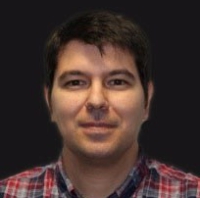Jonathan Nitschke received his bachelor's degree from Williams College (USA) in 1995 and his doctorate from the University of California, Berkeley in 2001 under the supervision of T. Don Tilley. He then undertook postdoctoral studies with Jean-Marie Lehn in Strasbourg under the auspices of a US NSF fellowship, and in 2003 he started his independent research career as a Maître-assistant (fixed-term independent PI) in the Organic Chemistry Department of the University of Geneva. In 2007 he was appointed University Lecturer at Cambridge, where he now holds a Professorship. He is the recipient of the Izatt-Christensen Award in Supramolecular chemistry (2022), a Wolfson Research Merit Award of the UK Royal Society (2017), the International Award for Creative Work of the Japan Society of Coordination Chemistry (2016), the Bob Hay Lectureship of the Royal Society of Chemistry (2013), the Cram Lehn Pedersen Prize in Supramolecular Chemistry (2012), the Corday-Morgan Prize of the Royal Society of Chemistry (2011), the Dalton Transactions European/African Lectureship (2011), the Werner Prize of the Swiss Chemical Society (2007) and the European Young Chemist Award at the first EuCheMS Congress (2006). He won an ERC Starting Grant (2011-2016) and an ERC Advanced Grant (2017-2021). His research program investigates the self-assembly of complex, functional structures from simple molecular precursors and metal ions. These research pathways are realized in the Nitschke Group at the Department of Chemistry, University of Cambridge (UK).


